n8n http request node
The HTTP Request node is one of the most powerful and flexible nodes in n8n. It allows you to connect with any service or application that exposes a REST API, enabling you to fetch, create, update, or delete data directly within your workflows.
Whether you want to pull information from a public API, send data to your internal systems, or connect to tools without a dedicated n8n integration, the HTTP Request node is your go-to option.
Before we start, if you are looking for help with a n8n project, we are taking on customers. Head over to our n8n Automation Engineer page.
What the HTTP Request Node Does
When you use this node, you’re essentially making a REST API call. This requires a basic understanding of:
Endpoints (URLs): The location of the resource you want to interact with.
HTTP Methods: Such as
GET,POST,PUT, orDELETE.Headers and Authentication: Metadata or credentials required by the API.
Query parameters or request body: Extra information sent along with the request.
n8n makes this process simple by letting you configure all of these settings directly in the node, or even by importing a cURL command from API documentation.
Let’s grab the http request node from the canvas
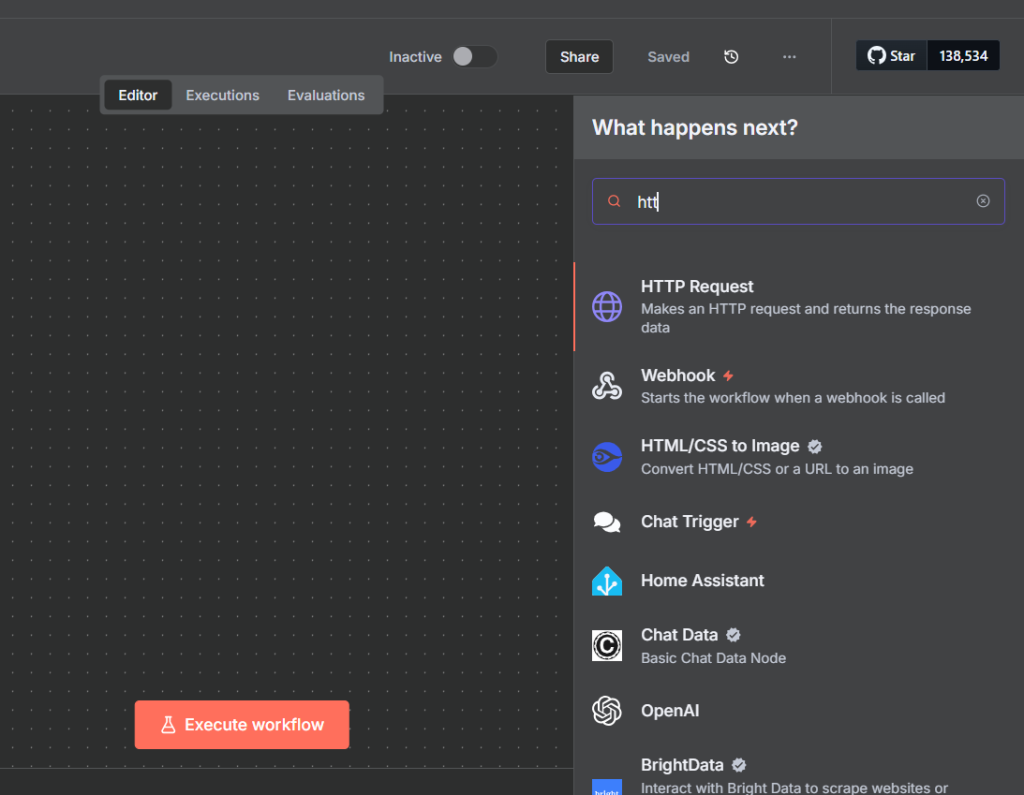
Key Parameters
1. Method
Choose the request method:
GET – retrieve data
POST – create data
PUT/PATCH – update data
DELETE – remove data
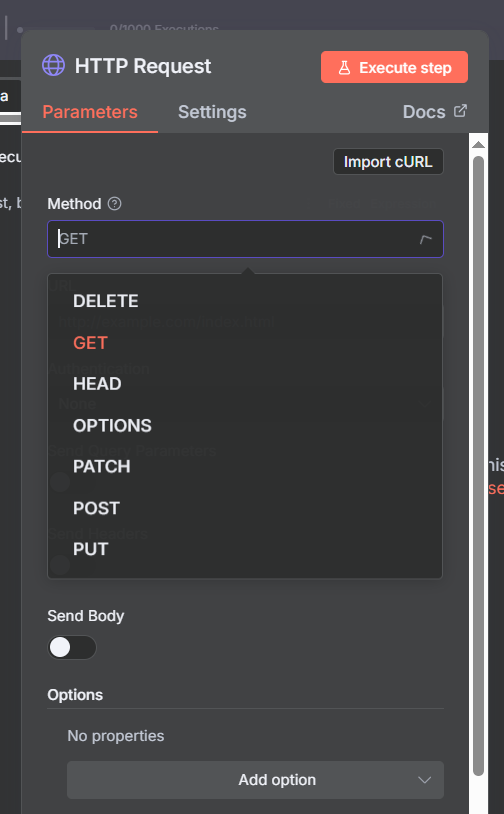
2. URL
Enter the API endpoint (e.g., https://jsonplaceholder.typicode.com/posts).
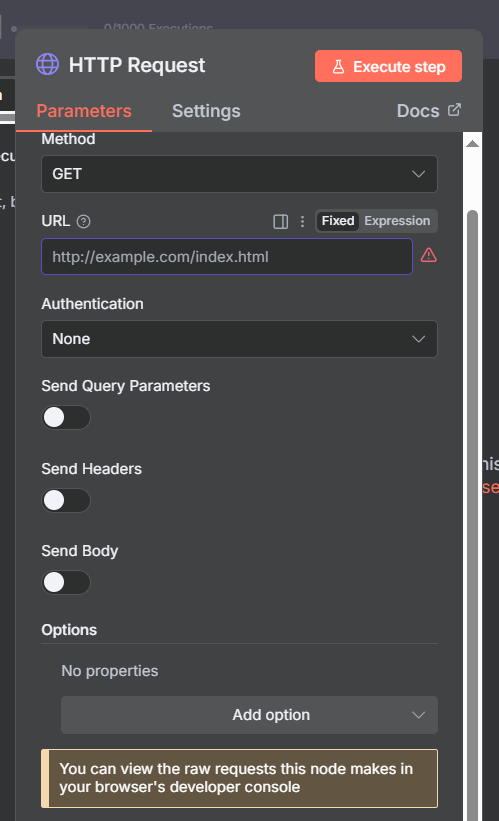
3. Authentication
n8n supports multiple authentication methods:
Predefined Credentials: Use built-in credential types (recommended).
Generic Credentials: Configure manually (Basic Auth, OAuth2, API Key, etc.).
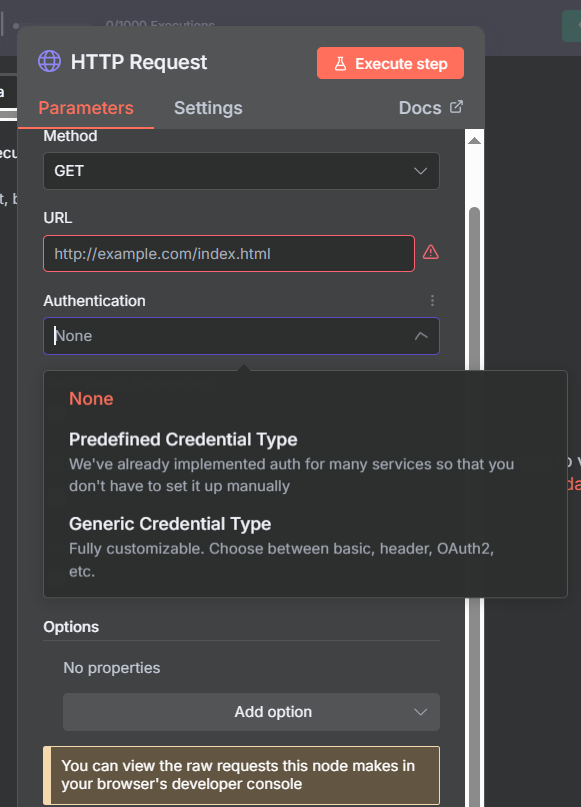
4. Query Parameters & Headers
Add filters or metadata as key-value pairs.
Query parameters = filters (e.g.,
?userId=1).Headers = metadata like content type or authorization.
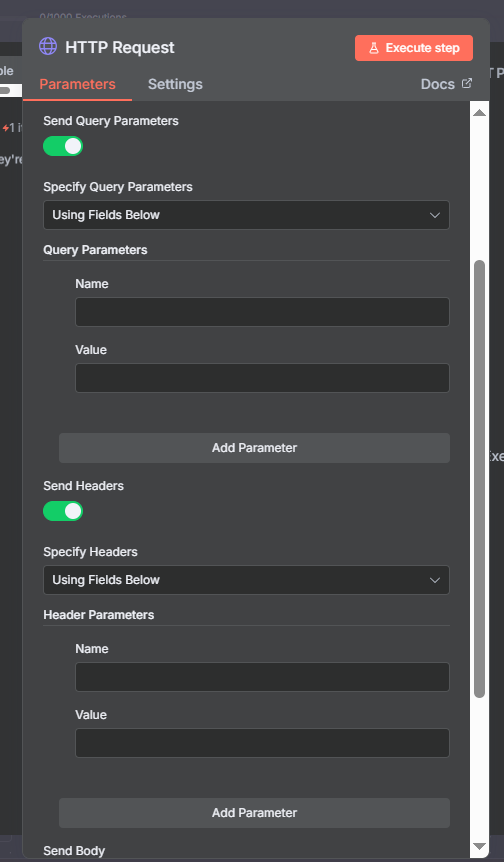
5. Request Body
For methods like POST or PUT, you’ll often need to send data in the body. Options include:
Form Data
JSON
Raw / Binary
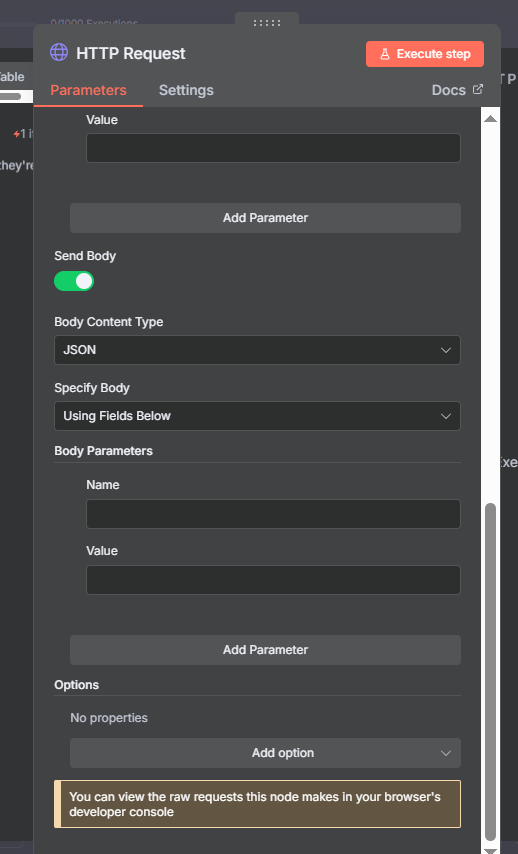
Example: Fetching Posts from a Public API
Let’s fetch posts from the free JSONPlaceholder API:
Add an HTTP Request node to your workflow.
Configure the node:
Method:
GETURL:
https://jsonplaceholder.typicode.com/postsLeave authentication empty (this API is public).
Execute the node.
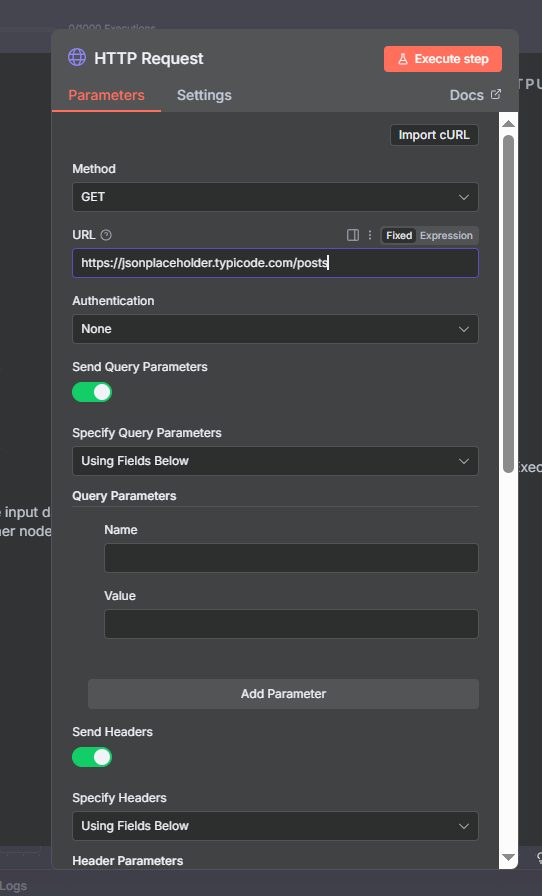
Execute the node and you’ll get the result.
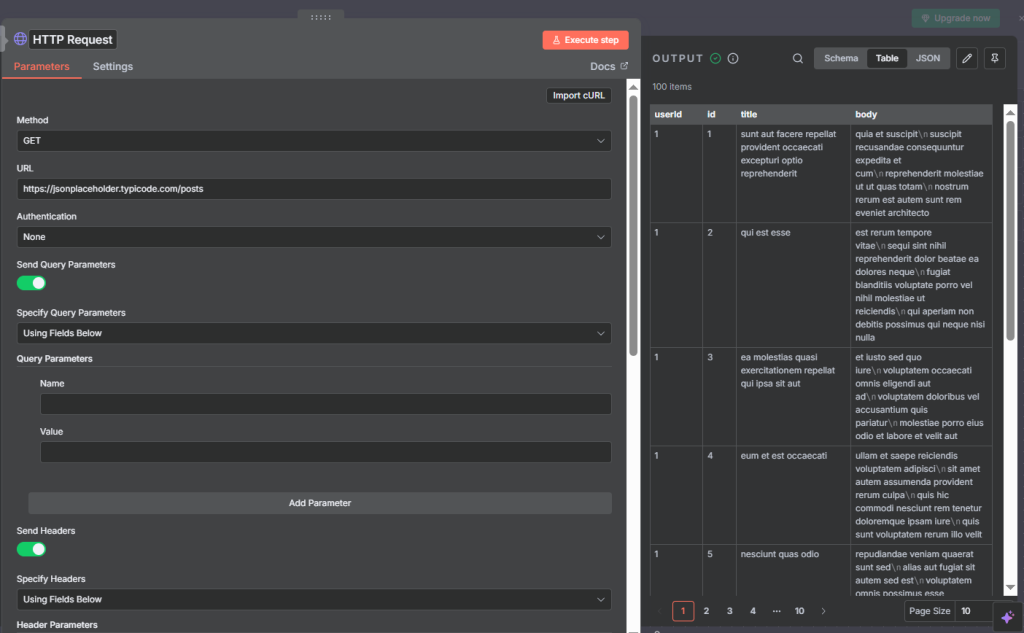
Filtering Results with Query Parameters
ypu can also filter with the Query Parameters.
Let’s say you only want posts where userId = 1.
Turn on Send Query Parameters.
Add:
Name =
userIdValue =
1
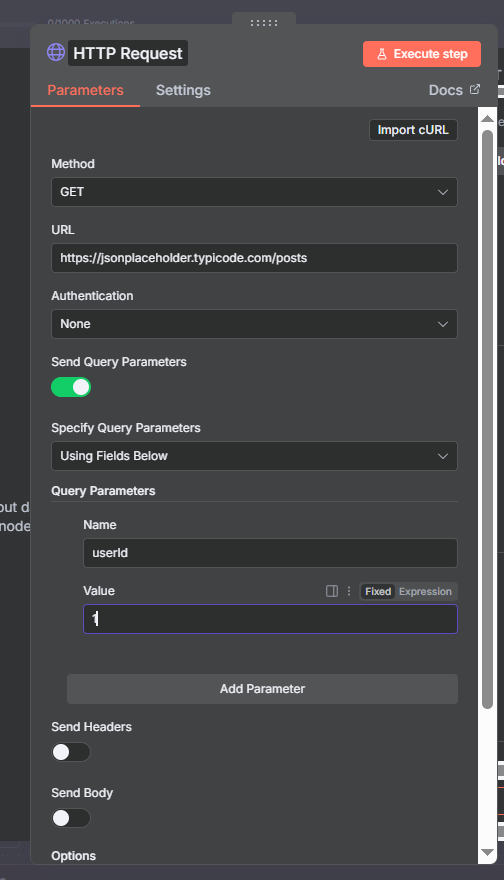
The node will fetch:
https://jsonplaceholder.typicode.com/posts?userId=1
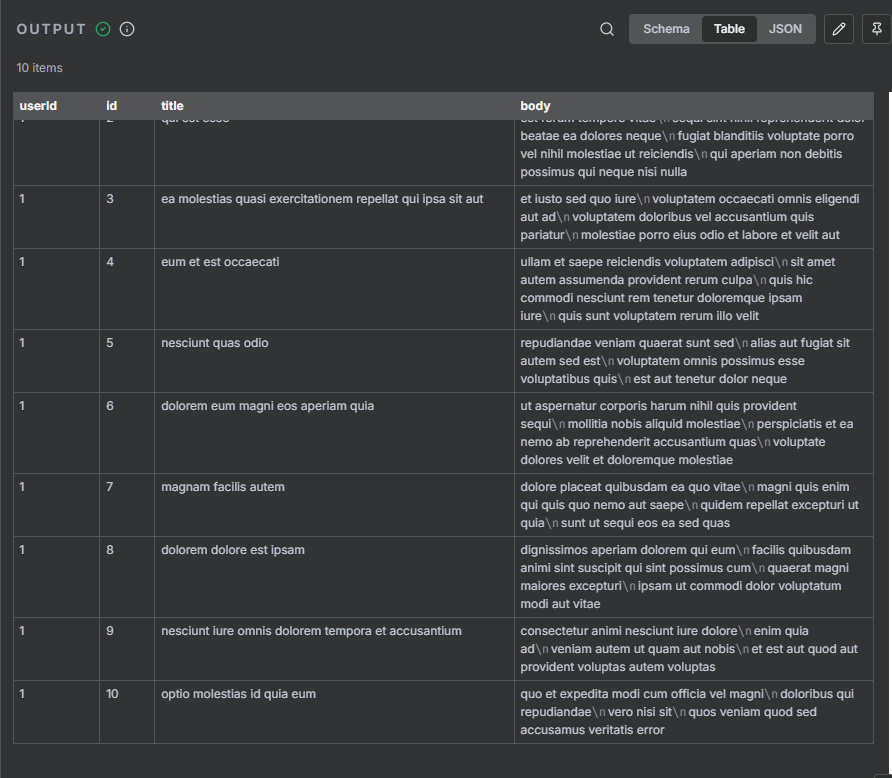
Summary
Almost any web service can be integrated with n8n with the HTTP Request node. It allows you total control whether you’re using APIs to develop fully automated workflows, send updates, or get data.
You will rapidly gain the ability to work with increasingly complicated APIs, such as authentication, sophisticated query filters, and structured request bodies, by beginning with straightforward queries like retrieving posts from JSONPlaceholder.
Thank you for reading this article. Make sure to check out our other n8n content on the website. If you need any help with n8n workflows we are taking on customers so reach out!
